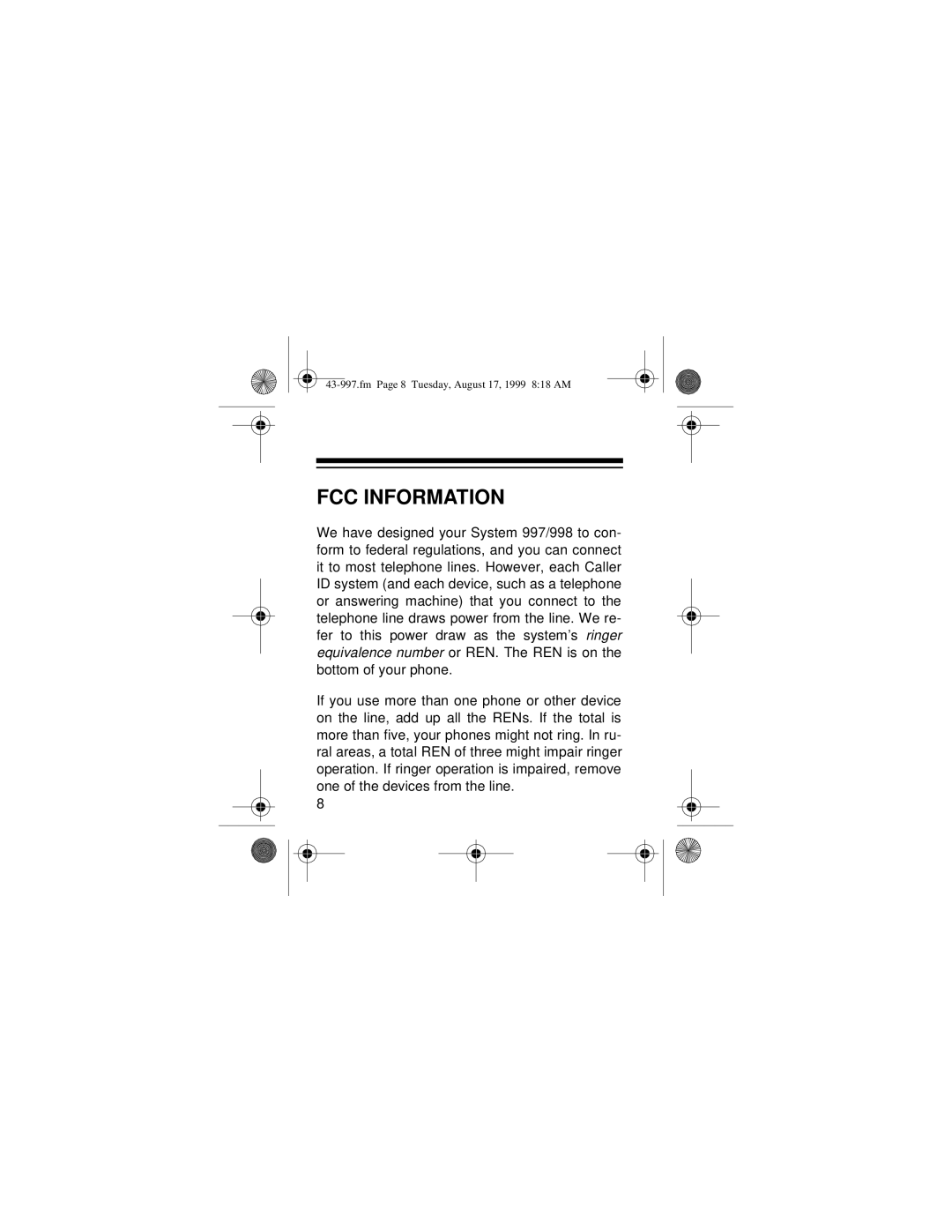997 specifications
Radio Shack, a name synonymous with electronics retail, has seen various iterations and product lines over the years. One such product that stood out in the realm of technology during its prime was the Radio Shack 997. This multipurpose device was not just a simple tool but a gateway to various electronics projects enabling hobbyists and tech enthusiasts to explore and innovate.The Radio Shack 997 was essentially a robust handheld computer and a tool for those interested in the burgeoning realm of personal computing in the late 20th century. Its main features included a compact design, making it portable and user-friendly for both experienced users and beginners alike. With a built-in keyboard and a clear LCD display, it facilitated easy data entry and navigation, which was crucial for programming and other computing tasks.
One of the standout technologies of the Radio Shack 997 was its capability to interface with other devices. This was a significant advantage, as it allowed users to connect external peripherals like printers and modems, expanding functionality beyond basic computing tasks. This connectivity was crucial at a time when personal computing was still evolving and integrating with emerging technologies.
In terms of characteristics, the Radio Shack 997 was powered by an efficient processor that enabled decent performance for its era. It came equipped with a range of applications, including basic programming tools that allowed users to write and execute their code. The available memory, while limited compared to today's standards, was sufficient for the kinds of tasks anticipated by the device’s target audience.
The operating system of the Radio Shack 997 was designed to be straightforward, making it accessible for users who were just stepping into the world of computing. The interface was intuitive, focusing on functionality rather than complexity, which made it an excellent choice for educational environments and for those looking to learn programming skills.
While the Radio Shack 997 may seem archaic in today’s fast-paced digital world, it played a crucial role in demystifying technology and making computing accessible to the masses. As a product of its time, it embodies the spirit of innovation and the desire for connectivity that continues to drive advancements in technology. Whether for educational purposes or personal use, the Radio Shack 997 remains an important chapter in the history of electronics and computing.

